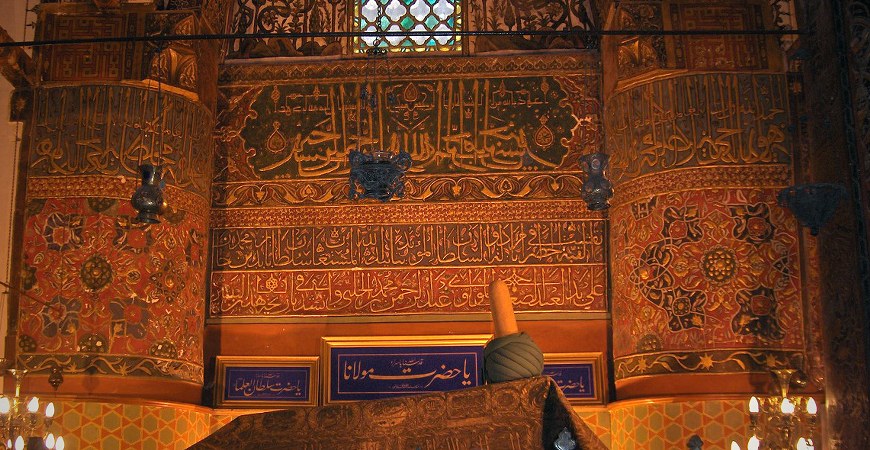The Silk Prayer Carpet in Mevlana Museum Konya- Chapter 2,
It was laid in the place of worship of the exalted Shah who is the protector of canonical law, and the shadow of God. This Shah is such a prince of religion that he is as great as Alexander and thousands of Alexanders are his subjects and slaves.
As this poem tells us this Prayer Carpet was woven near the grave of the children of the prophet. This is Kerbela, where the grave of the Prophet Mohammad’s grandson Huseyin is situated. Although the name of this ruler is not written on the carpet, in a museum directory published in 1930 it is written: “This Prayer Carpet was presented to the Tomb of Mevlana by an Ottoman sultan upon his return from a journey to Iran.- The name which immediately springs to mind is Yavuz Sultan Selim, because he had always felt a great interest in the Tomb of Mevlana in Konya, and visited it on several occasions between his journeys to Egypt and Iran. At each visit to the Tomb, the sultan would bring some gifts or have something made for the Tomb. He had fountains constructed, and water brought from the region of Dutlu. Just as he visited Konya on April 24, 1516, around the time of his campaign against the Persian Shah Ismail. so he was again in Konya on June 26, 1516, before he set out on his Egyptian campaign. A manuscript by Yusuf Dede in Mevlana Museum tells about the valuable presents given by Sultan Selim to the Mevlana Tomb, when he visited Konya on his way back from campaigns, such as lamps, grave clothes, and other valuable objects. It is documented that the silk prayer carpet in the museum today was presented at this time by Yavuz Sultan Selim. It must have been woven in Kerbela for the Shah to use during his worship. This means that the prayer carpet is at least 460 years old.
You will continue to find more details of the silk prayer carpet in Mevlana Museum Konya in chapter 3.



































































































































